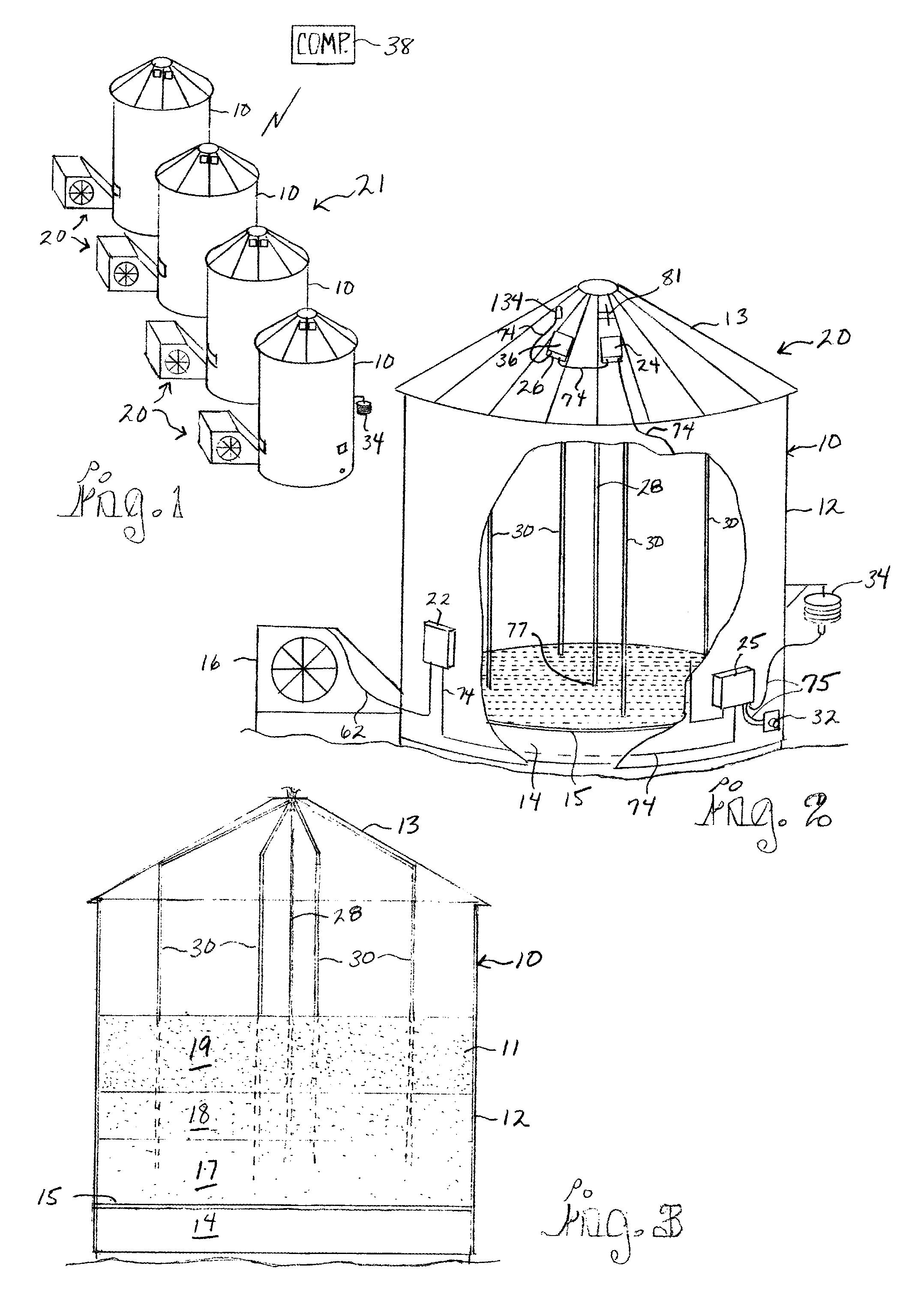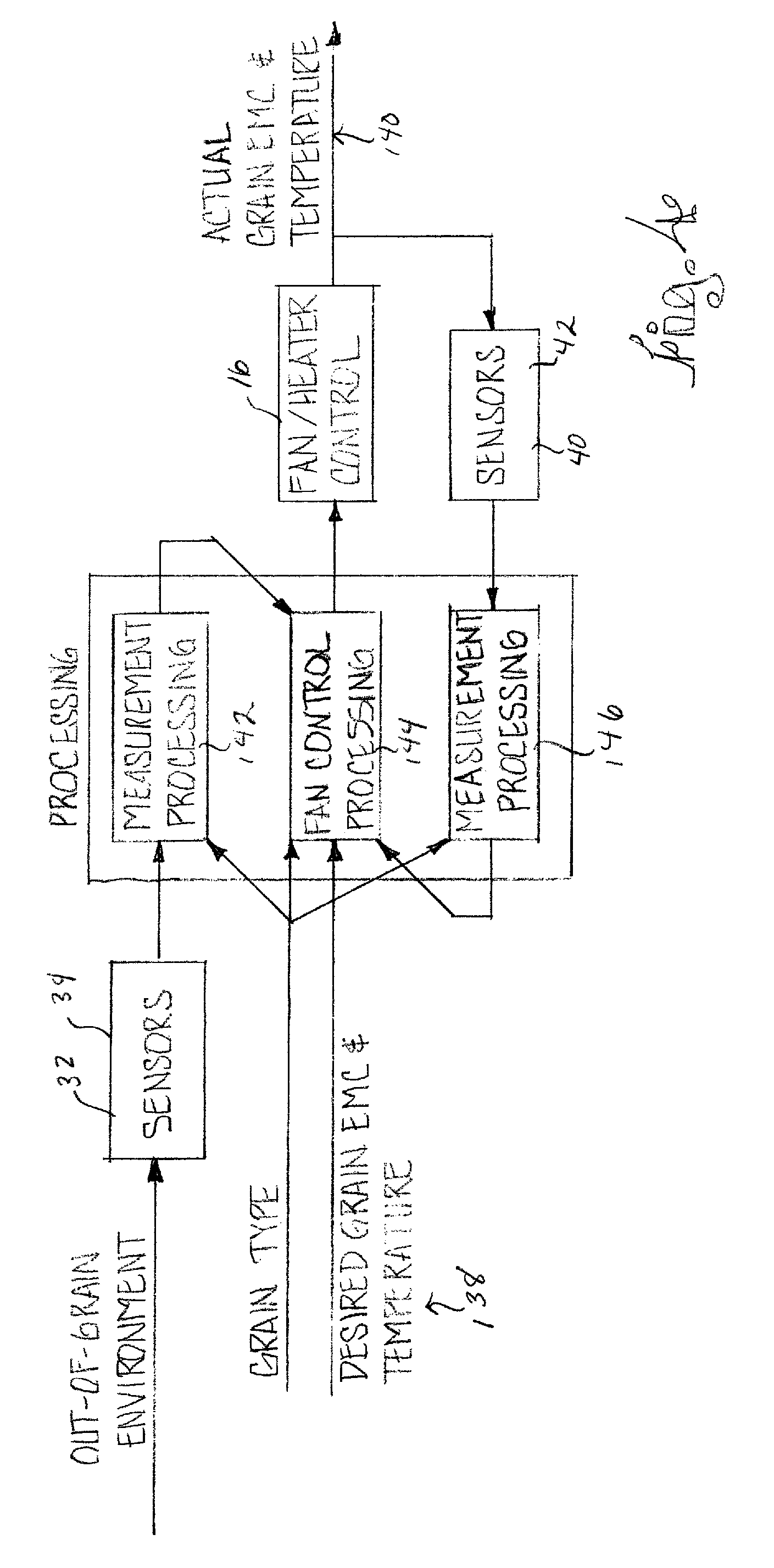Grain drying system
a grain drying and grain technology, applied in drying machines, lighting and heating apparatus, furnaces, etc., can solve the problems of high fuel consumption, small or inexistent moisture movement from wet grain to moist air, and high drying rate, so as to facilitate the sensor's determination of relative humidity and accurate determination of grain condition
- Summary
- Abstract
- Description
- Claims
- Application Information
AI Technical Summary
Benefits of technology
Problems solved by technology
Method used
Image
Examples
Embodiment Construction
[0029]As required, detailed embodiments of the present invention are disclosed herein; however, it is to be understood that the disclosed embodiments are merely exemplary of the invention, which may be embodied in various forms. Therefore, specific structural and functional details disclosed herein are not to be interpreted as limiting, but merely as a basis for the claims and as a representative basis for teaching one skilled in the art to variously employ the present invention in virtually any appropriately detailed structure.
[0030]Now, referring to the drawings and specifically FIGS. 1-3, conventional grain bins 10 for storing harvested grain 11 are shown which have been modified to include a grain drying control system 20 of the present invention. Each bin 10 has a side wall 12, a roof 13 and a plenum chamber 14 formed at the bottom of the bin 10, covered by a perforated floor 15. One or more fans 16 (and / or an optional heater(s), not shown) are installed outside each grain bin ...
PUM
 Login to View More
Login to View More Abstract
Description
Claims
Application Information
 Login to View More
Login to View More - R&D
- Intellectual Property
- Life Sciences
- Materials
- Tech Scout
- Unparalleled Data Quality
- Higher Quality Content
- 60% Fewer Hallucinations
Browse by: Latest US Patents, China's latest patents, Technical Efficacy Thesaurus, Application Domain, Technology Topic, Popular Technical Reports.
© 2025 PatSnap. All rights reserved.Legal|Privacy policy|Modern Slavery Act Transparency Statement|Sitemap|About US| Contact US: help@patsnap.com



